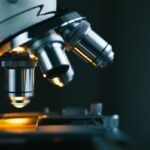Statistics have shown that approximately 30% of adult acute myeloid leukemia (AML) patients are able to survive more than five years after their diagnosis. Over half of AML patients relapse after receiving treatment with many patients hospitalized due to weakened immune systems resulting from cancer and cancer therapies.
In addition, rather than benefitting from stem cell transplants which can prolong life, most older patients find that they are not qualified to receive transplants due to advanced age or being unable to find a suitable donor. Resistance to treatment also remains a significant challenge.
There is an urgent need for treatment that is less toxic and more efficient. Preclinical findings describing the new CD38-BIONIC antibody were recently published in the journal Blood.
About IFNy
Immune cells produce a substance called Type II interferon (IFNy) that inhibits leukemia stem cells from spreading and dividing cancer. Conversely, IFNy stimulates the protein CD38, which suppresses immune cells and renders them incapable of responding aggressively against the cancer.
Further, leukemia produces abnormal rapidly dividing blood cells that are called blasts and are CD38-positive. Blasts are very easy to target as opposed to leukemia stem cells that resist treatment. These stem cells are CD38-negative.
The Scientists Respond
The scientists at the City of Hope, a major U.S. cancer research organization, met the challenge by developing CD38-BIONIC antibody which forms a bridge between T cells and leukemia stem cells. The combination allows T cells to provide protection against leukemia stem cells that express CD38, which are made vulnerable to the immune system.
It is noteworthy that neither immune cells found in human tissue, new blood stem cells, or mouse models of AML were damaged.
By meeting these common AML challenges, namely resistance to drugs and relapse after treatment, the new therapy may have a lower toxic effect on older patients who do not meet the requisite qualifications for stem cell transplants which are at this time the only cure available for AML.
A New Therapeutic Target for AML
Dr. Flavia Pichiorri at City of Hope, co-leader of the study, explained that although CD38 has been a target in multiple myeloma and other types of leukemia, the treatment has not been prioritized for relapsed AML where cells are mostly CD38-negative.
When CD38-BIONIC binds to CD38-positive blasts, it triggers T cells that release IFNy. This in turn converts stem cells from CD38-negative into CD38-positive. Therefore, in one stroke all leukemia cells become exposed to the treatment.
Fellow investigator John Williams commented that the team believes the BIONIC format will lead to efficient connection points in the immune system. As a further explanation Dr. Williams said that the leukemia stem cells are driven by IFNy to “paint” themselves with CD38 creating excellent targets for IFNy.
Professor Guido Marcucci, a fellow investigator at the City of Hope involved with the study, explained that the team’s goal involves eradicating leukemia stem cells and remove the risk of relapse in AML patients. The professor acknowledged that there is a need for additional work to adapt their preclinical research to an effective treatment for humans.
acute myeloid leukemia AML blood cancer leukemia research treatment
Last modified: March 26, 2024











